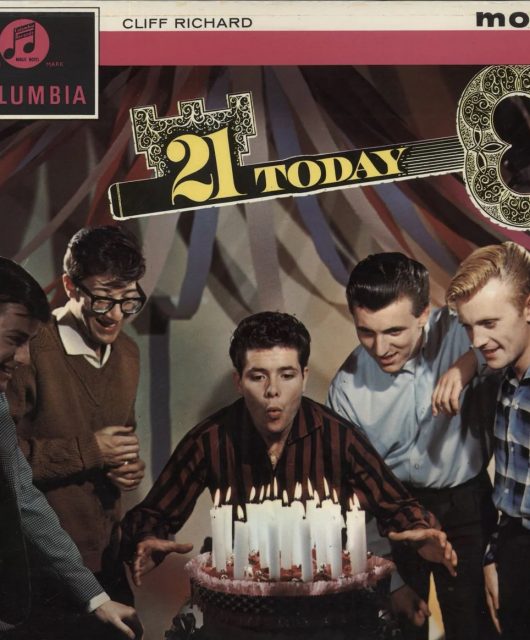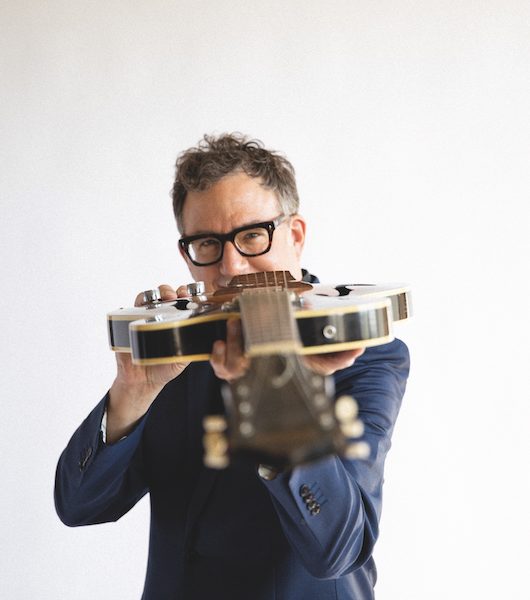With a timeless design that has remained virtually untouched since it first landed 70 years ago, the Leo Fender Stratocaster is without doubt the most well-known and influential electric guitar in the world. Not only did the Strat soundtrack the early days of rock’n’roll, but it’s since become a full-blown cultural icon.
TV sets across the States flickered to life at 8pm on the evening of Sunday 1 December 1957 to beam the Ed Sullivan Show live into the lounge rooms of America. It would be, for most, the first time they’d set eyes on young Texan rockabilly sensation Buddy Holly –but for the uninitiated it was also a beguiling first glimpse of Fender’s dazzling new space-age guitar.
As Buddy fired up The Crickets into That’ll Be The Day, sleek sunburst Stratocaster slung around his shoulders, it was one of those undeniably ground-trembling moments in music history. Mounting his own unique rebellion, seen through thick-rimmed black spectacles and with a wholesome, nerdy air that made him conversely hip, Buddy was the first of his kind to pick out the Strat as his chosen weapon to mount the rebellion, aimed squarely to unsettle the parents sat on the couch, and thrill the kids sat on the floor. Both man and instrument were an immediate sensation. The Strat instantly became a marker of cool, a musical partner to which Buddy would remain faithful until the day the music died.
Work Of Art
Few man-made objects have garnered such awe as the Strat. In fact, for the non-musical, it’s likely the only guitar they know the name of. Its a design so iconic it’s in the Museum of Modern Art in New York. “If you were gonna draw an electric guitar from your mind’s eye, most people would draw a Stratocaster,” Fender’s Justin Norvell told NPR. “But the thing that connects people to that guitar and that shape is the music they grew up on.” And that’s the marvellous thing about the Strat: it rose to popularity in the arms of rock’n’roll.
The journey begins in atiny workshop in Fullerton, Southern California, its proprietor one Clarence Leonidas ‘Leo’ Fender –an introvert, workaholic and perfectionist. Leo was an innovator, at his happiest when tinkering with electronics. With his partner Doc Kauffman, Leo set up shop as K&F in 1943 manufacturing short runs of amplifiers and lap-steel guitars amid the Hawaiian craze. When Kauffman split from Leo just three years later, the Fender Electric Instruments Company was born.
Beyond his line of amps, Leo turned focus to guitars, by 1950 making aname for himself with the ‘Spanish-style’ Esquire/Broadcaster, the first mass-produced solid-body electric guitar. “Leo was aradio repair man unencumbered by the tradition of luthiery,” guitar guru Paul Balmer tells us. “He sought simple practical solutions. He had also visited the Henry Ford car factory and trying to keep up with demand saw the advantage of mass-producing components that could be screwed together on an assembly line.”
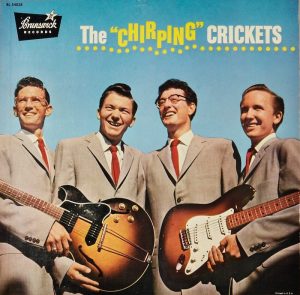
To The Masses
This pioneering new approach focused on ease of manufacture but, unlike the majority of electric guitars, these new models were also relatively simple for the working musician to maintain –plus, they eliminated the squalls of ear-piercing feedback that plagued their hollow-bodied competitors.
Derided by many at the time as ‘a toilet seat with strings’ or ‘canoe paddle’, by 1951 Fender’s Broadcaster had been upgraded to become the ‘guitar that started it all’ –the Telecaster. “Players quickly realised that Fender had given them something not only new and unusual, but something well-designed, easy-playing, efficient, rugged, affordable and, above all, great-sounding,” writes Jeff Owens on Fender.com. “It’s not like Leo Fender was trying to be radical and revolutionary, a practical person, he just wanted to build abetter guitar.”
Leo’s genius was function and, perhaps surprisingly, he didn’t play guitar himself. Nor, according to many folks that worked with him, was he particularly interested in aesthetics: “If I have $100 to make something, I’ll spend 99 making it work and one dollar making it pretty!” As such, those early models were utilitarian, well-designed yet –while many would disagree now –less than easy on the eye, particularly in a 50s landscape buzzing with sharp fashion, tail-finned Cadillacs and jukebox eye-candy. What’s more, the other guitar houses had themselves begun making more luxurious solid-bodies, be it Gibson’s Les Paul and Harmony’s Stratotone, both introduced in 1952, or Gretsch’s Duo Jet released ayear later.
Fender needed to up its game, from what head of sales Don Randall called its “plain Jane” Tele. And with little interest in the actual playing of the thing, Leo made sure to surround himself with musicians as well as technicians for this new upscale model, relying on collaboration to perfect his vision.
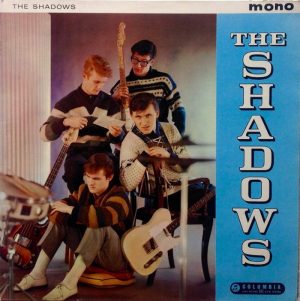
Dream Team
The Strat would be somewhat of a radical departure from Fender’s previous designs, notable for a few highly innovative features, often developed to solve problems presented by those ‘guinea pigs’ employed to road-test the guitars. And one of Leo’s inner circle had afoot in both worlds, as adept on stage as in the workshop. Appointed in 1953 as Leo’s assistant engineer, Hawaiian designer, engineer and multi-instrumentalist Freddie Tavares’ first assignment was the Strat.
Tavares was a talented musician, his most famous outings being the pedal steel intro to the Looney Tunes theme or providing ukulele on Elvis’ Blue Hawaii, plus he’d also played for Dean Martin, Bing Crosby, The Andrews Sisters and countless others. But, vitally for Leo, Freddie was also skilled in design and engineering. “I think Freddie Tavares should be given alot of credit for taking Leo’s rough concept to a ‘Stratospheric’ design,” notes Balmer. It was Tavares who first drafted out a rough sketch of the Strat’s shape, based on Fender’s two-horned Precision bass issued in 1951. That crude outline would develop into a “comfort-contoured” body that made it both more ergonomic, enabling guitarists to reach the higher frets, but also stunning to look at.
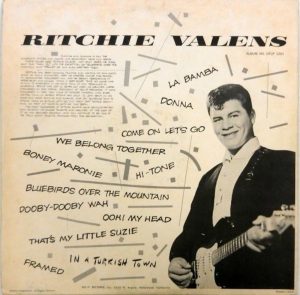
Built For Comfort
Discomfort was a major issue for gigging musicians. Country musician Bill Carson was on the payroll from 1957. “The reason Ilooked [Leo] up was because I didn’t like the Telecaster,” Carson told the Musicians Hall Of Fame. “It seemed like every radio station, every recording studio, the gigs in the clubs that you played… Ihad to sit on that stool and the edge of the Telecaster would dig into my ribs and it got to be unbearable.” Bill promptly sawed off the offending limb of the guitar: “I always insisted with Leo that an instrument that you hold ought to fit you like acustom-made shirt!” According to Carson, his pals began to borrow his hacksawed prototype, often having to chase them to get it back. Soon, says Bill, they’d started asking Leo to make one just like it for them.
While it’s hard to know exactly who did what –stories differ depending on who was speaking –the Strat was clearly a team effort. Leo himself has said that it was country musician Rex Galleon who was first to suggest those slender contours, while long-time employee George Fullerton gave both Bill and Rex credit… No matter, it’s clear that the Stratocaster took shape gradually with input from all concerned –and with inspiration, credited or not, from various outside sources.
Iconic Look
Other innovations included its three-pickup design, that afforded awider tonal palette, and the walnut ‘skunk stripe’ along the bottom of the neck that hid a ‘truss-rod’, inserted to strengthen it. Elsewhere, a front-mounted jack was added after complaints about the Tele jack breaking on the road. Plus, again in response to musician’s requests –and with Tavares’ help – a vibrato arm, or ‘whammy bar’, was attached to the bridge for that shimmering twang later adopted liberally by guitarists such as Hank Marvin and Duane Eddy. The ‘trem’, as it is often called, was based, says Balmer “on observing the fulcrum principle of [Leo’s] wife’s kitchen scale”.
The Strat’s iconic headstock was certainly inspired by another luthier, Leo’s colleague Paul Bigsby, whose pioneering guitars were played by plenty of star turns, most notably Merle Travis and Grady Martin. But for many, the Strat’s most game-changing feature was its bridge. Carson was the man who’d suggested six separate parts, one for each string – allowing individual height adjustments, something no other guitar had – meaning far greater control over the playing experience.
Flight Of Fancy
Under factory manager Forrest White, it was Fullerton, an ex-Lockheed machinist and a gifted guitarist himself, who was entrusted to help ready aprototype. “Fullerton was hands-on,” said Richard Smith, curator of the Fender Gallery at the Fullerton Museum to The Orange County Register. “He implemented ideas that Leo had in his inventions and was able to help make them areality.” (The famous “Original Contour Body” tagline was inspired by Fullerton’s wife Lucille, who’d blurted out, “Gee, that looks like acontoured body!” when she’d first seen one.)
With the technical side complete, it was time to make them look pretty. The first batch were spruced up with the now iconic two-tone ‘sunburst’ finish, a high-end blend of a ‘Dark Salem’ outer shade and ‘Canary Yellow’ inner shade, a technique Gibson and others had been using for some time but a first for Fender. And finally, it fell on Randall, a keen pilot, to provide a name, possibly inspired by Boeing’s B-47 Stratojet, Pontiac’s Strato-Streak automobile or even that Harmony Stratotone guitar. “We needed afancier guitar,” he told author Tony Bacon. “When the Stratocaster came along, they were talking about putting guys into orbit, so it was Telecaster, then Stratocaster – into the stratosphere.”
The Stratocaster went into production in October 1954, announced to the American public that spring in International Musician magazine. Pricey at just under $250, at first, the Strat hardly flew off the hooks. In fact, in its first two years of production it shifted less than 800 units. Yet, slowly but surely, it gained traction.
The Lubbock Legend
While originally intended for country and western swing musicians –and it was they who first adopted it, Buddy’s Ed Sullivan spot was a turning point. “Without Buddy the Strat may have dwindled on the vine,” suggests Balmer. “That percussive rhythmic chordal solo sound inspired everybody.”
Sometime in 1954, Buddy borrowed money from his brother to buy a Strat, having seen one in the hands of his mentor, Clyde Hankins. His Gibson Les Paul, acquired some weeks before, hadn’t cut the mustard. “A Stratocaster can twang,” guitar expert George Gruhn told Fretboard Journal. “A Les Paul can do many things, but it can’t twang… The Stratocaster was perfect for what Holly wanted to do.”
One need only look to the vanguard of British rock’n’roll to see how Stratmania quickly spread. Buddy’s 1958 UK tour had made serious waves over here, as did a TV slot on Val Parnell’s Sunday Night At The London Palladium, seen, notably, by Paul McCartney and John Lennon.
“Buddy Holly and The Crickets were the loudest thing we’d ever heard,” The Tremeloes’ Brian Poole told The Independent. “We hadn’t seen a Fender Strat before.” In the same Independent article, The Searchers’ Frank Allen was another to fall for the guitar’s charms via the Lubbock legend: “While we were skiffling away trying to find a fourth chord, Buddy was giving us the opening bars of That’ll Be The Day, with unbelievable expertise and on an instrument that was the equivalent of abullet-finned ’59 Cadillac. He looked gangly and geekish with those glasses but that guitar made him unbelievably cool.”
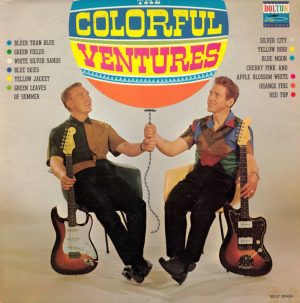
Casting The Net
A year on from that tour, Cliff Richard and Hank Marvin sought out the gorgeous electric they’d seen their hero slinging on the sleeve of The “Chirping” Crickets LP. Hank and his new Fiesta Red model would spread the word yet further afield. “Everybody wanted a red Stratocaster,” remembered The Shadows’ Bruce Welch to musiconearth.co.uk. “Kids would be pressed against music shops with their nose, looking through the windows at a red Strat… Everybody wanted to play like Hank and have a Strat like Hank.”
Hank and Buddy weren’t the only ones bringing Fender’s new revelation to the attention of the newly awakened teenagers. Ike Turner was among the first to get one, Bob Wills and Sun Studio’s guitarist Roland Janes used one, as did Carl Perkins and Blue Caps guitarists Johnny Meeks and Howard Reed. Plus, joining Buddy on 1959’s fateful Winter Dance Party tour was Ritchie Valens, another devotee to those slender curves.
Soon Fender’s ad campaign aligned not with the staid country establishment but with the cool kids, amarker of hip. “It was right on the money!” adds Balmer. “Sexy and space-age lots of atom swirls and muted colours”. Where other’s catalogues proffered stuffy images of suited fuddy-duddys on stools, “open a Fender catalogue,” relayed The Fender Archives author Tom Wheeler to WAMU, “and you’d see girls in bikinis and guys in board shorts, with surfboards in the background, sitting around a campfire.”
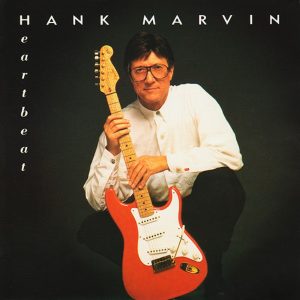
The Beast
The big moments kept coming, one such momentum-builder being Dick Dale’s first rip-roaring show at Newport Beach in July 1961, Dale strangling his gold Strat, ‘The Beast’, to fire out the machine-gun surf of Miserlou. Other surf outfits, The Chantays (Pipeline), The Surfaris (Wipeout) and The Ventures via (Ghost) Riders In The Sky all harnessed its power. As did gifted bluesmen from Pee Wee Crayton and Buddy Guy to Otis Rush and on. From there, it was everywhere, Jimi Hendrix to Eric Clapton, Rory Gallagher to Yngwie Malmsteen, all of whom are, to acertain extent, defined by their Fender Stratocasters.
The Strat turns 70 this year and fans can feast their eyes on abrand new selection of special anniversary models. It’s a design that’s barely changed ajot in seven decades. “The Strat is iconic,” muses Balmer, “as it’s the perfect marriage of form and function – it’s the right weight for atwo-hour gig, it’s sonically versatile, easy to play, it has a ‘trem’, it stays in tune –and it defines ‘cool’.”
The Fender Stratocaster, the most iconic –most copied –guitar in the world. Jimi Hendrix would set fire to one, Bob Dylan would ‘go electric’ with one, and Kurt Cobain would assault one on aregular basis. But let’s not forget that December night when Buddy first brought the Strat to life… ?
Words by Rik Flynn
Check out Fender through the years here
Read more: The Shadows – Strat’s Entertainment



